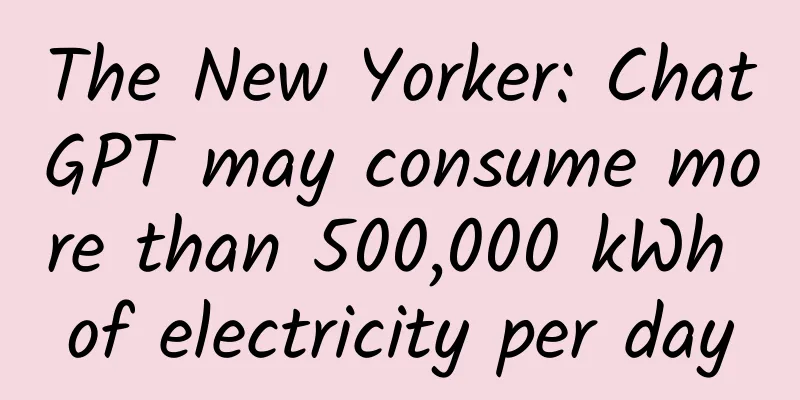The New Yorker: ChatGPT may consume more than 500,000 kWh of electricity per day

|
According to The New Yorker, OpenAI's popular chatbot ChatGPT may consume more than 500,000 kilowatt-hours of electricity per day to respond to approximately 200 million requests from users. In comparison, the average American household uses about 29 kilowatt-hours of electricity per day. Dividing ChatGPT's daily electricity consumption by the average household's electricity consumption, it can be found that ChatGPT's daily electricity consumption is more than 17,000 times that of a household. That sounds like a lot, but if generative AI is further adopted, the power consumption could be even more. For example, if Google incorporated generative A techniques into every search, it would consume about 29 billion kilowatt-hours of electricity per year, according to calculations by Alex de Vries, a data scientist at the Dutch National Bank, in a paper published in the sustainable energy journal Joule. That’s more electricity than countries like Kenya, Guatemala, and Croatia use in a year, The New Yorker reported. “AI is very energy-intensive,” de Vries said. “Each AI server already uses as much electricity as a dozen UK homes combined. So these numbers can add up very quickly.” However, estimating how much electricity the booming AI industry consumes is difficult to determine. According to The Verge, there is considerable variation in how large AI models are run, and the big tech companies driving the AI boom are not fully transparent about their energy usage. However, in his paper, de Vries presents a rough calculation based on figures published by Nvidia, a chipmaker that controls about 95% of the graphics processor market. In his paper, De Vries estimates that by 2027, the entire AI industry will consume 85 to 134 terawatt hours per year (1 terawatt hour is equivalent to 1 billion kilowatt hours). “By 2027, AI could account for half a percent of global electricity use,” de Vries said. “I think that’s a pretty significant number.” From Global Market Report |
<<: Li Ning crosses the river by feeling Luckin Coffee
>>: Small but different Xiaomi 40-inch TV Xiaomi TV 2 first experience
Recommend
Tips for scientific placement of information flow ads!
With the vigorous development of mobile communica...
Are there any new tricks for video websites in 2015, such as relying on parents, exclusive broadcasting and self-production?
After summarizing and sorting out the video websi...
Turritopsis dohrnii: The Fairy Dancing Between Life and Death
All tangible and existing things begin their jour...
Credit card advertising and banking app user growth bottleneck
What are people competing for in the Internet cir...
First in China: Google Glass live broadcast surgery
The first Google Glass surgery teaching live broad...
Guangdiantong advertising strategy!
Advertising Placement 1.QQ, Tencent Information S...
Why does your app have no users? Because the IQ of ordinary people is "too low" to learn...
Bump is an amazing cross-platform data transfer a...
A new round of precipitation is coming to the south! Beware of the "overlay effect" when traveling on May Day
It is the May Day holiday, but the weather is not...
What kind of milk should children, teenagers, adults, and the elderly drink? (A must-read for the Chinese New Year)
What is the first choice of souvenir when visitin...
Let’s talk about how to recommend and promote good products on Zhihu in 2021!
This article mainly explains the Red Ocean strate...
Never left: Spartan has built-in IE opening function
A new version of Windows 10 (Windows 10 build 100...
Zhongshentong - How to get an account with over 10,000 followers in 15 days, 31 practical courses on how to create a hit account
Zhongshentong - How to get more than 10,000 follo...
Another company is testing driverless cars on US roads
Self-driving cars have become an emerging technol...
Extending the break time between primary and secondary schools in Beijing from 10 minutes to 15 minutes will have what benefits for students’ physical and mental health?
On August 30, the reporter learned from the Beiji...
Examples of optimal materials for information flow advertising to help you improve your conversion rate!
We have selected and compiled some information fl...









